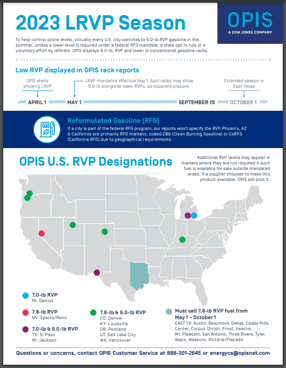Sign up for daily news updates from CleanTechnica on email. Or follow us on Google News!
At the Pacific Coast Builders Conference in Anaheim, California, recently, the Insurance Institute for Business & Home Safety (IBHS) conducted an experiment. It built two identical structures, one surrounded by combustible mulch, shrubbery, and a wooden fence, and the other with a 5-foot-wide apron of concrete around the structure, a metal fence, and several fire retardant features. Then they started a fire around both buildings.
We don’t usually start a story with a video, but this one is fairly dramatic. Within minutes, the first structure was fully engulfed in flames, while the second structure, just a few feet away, was totally unaffected by the fire next door. The video starts at the 17-minute mark, just as the fires were first lit.
The message to home-builders was stark. Homes in certain parts of the United States must now be constructed with wildfires in mind, or they most likely will not be insured, which would mean they cannot be purchased by someone who requires a mortgage. We have said it often enough — ultimately the insurance industry will determine where we can and cannot live.
In part because of climate change and the resulting increase in catastrophic storms and fires, insuring homes in some parts of the country has become a money-losing proposition for the insurance industry. The New York Times reports that across the United States, insurers lost $33 billion in 2023 on personal home and auto insurance, according to AM Best, a ratings agency for the industry.
Insurance & Wildfire Risk
In California, where wildfires have consumed more than 220,000 acres of land in just this year, major insurers like State Farm, Allstate, and Farmers have all pulled back. In some areas, they have stopped writing new policies and have canceled some existing policies. This month, State Farm asked California’s insurance regulator to approve a 30% rate increase for the owner-occupied home insurance it still provides in the state.
“We’ve always had insurance, it’s just been there, it’s been included in our everyday processes like getting a mortgage,” said Josh Wilkins, a retired firefighter in Idaho who now consults with insurers and property owners about reducing fire risk. But “that business model is dying. The end users — the insurance customers — are actually going to have to do something to make sure that they keep the business model going.”
That “something” could be the biggest overhaul of building standards in more than 30 years. After Hurricane Andrew devastated part of South Florida in 1992, pressure from the insurance industry compelled homeowners and builders in that state to switch to stronger windows and roof ties. (Believe it or not, in that era, many roofs in Florida were only held in place by gravity.) The industry is applying a similar kind of pressure now in response to growing wildfire risk.
The IBHS, which is backed by over 100 insurance companies, is advocating for new standards in landscaping, fencing and building materials that it says can help prevent a wildfire from ripping through an entire neighborhood, as happened in Lahaina, Hawai’i, recently.
In Anaheim, not everyone was pleased with the demonstration. One landscape architect complained that builders were “not going to be happy” to have to cede valuable space around a house for a fire resistant ring of concrete. People love their mulched gardens and wooden fences that snuggle right up to their homes. We want what we want and that’s the end of it. An official from California Department of Forestry and Fire Protection responded that architects and designers would have to “re-imagine beauty. It’s kind of like driving the speed limit,” said John Morgan, the agency’s chief of staff for wildfire risk reduction. “We might not like it, and we might not always do it, but we should.”
Retrofitting Existing Properties
Insurers don’t just want builders creating new developments to adopt the standards, they want property owners to retrofit their buildings to the wildfire-resilient specifications. Owners are being asked to cut down trees, tear up shrubs, replace windows and gutters, and remove wooden decks and fences and rebuild them with things made out of metal, stone, or other noncombustible materials.
The IBHS has inspectors available who will certify that such retrofits were completed, which can help lower insurance bills. States like California and Oregon have their own recently adopted requirements for how homes and developments need to be overhauled to protect against wildfire, but they are not as stringent as the I.B.H.S. standards.
Wildfires are increasing in frequency and severity because of widespread droughts, hotter temperatures, and stronger windstorms. Between 2018 and 2022, wildfires around the world caused $39 billion in losses for insurers, and four of the five costliest fires during that period were in California. Because of those loses, insurers are declining to write policies in many parts of the American West.
Josh Wilkins, the consultant in Idaho, estimates that insurers want to reduce wildfire risk by 20% before they will consider returning to a region. To assess their risk, insurance companies are using powerful prediction models, which synthesize information about rainfall, vegetation, wind, topography and human activity to make detailed analyses.
Insurance & Data
One model from the data and analytics company CoreLogic can pinpoint the risk assessment to within a square meter and focus on a single structure. The model overlays color-coded tints onto satellite maps of an area that function like traffic lights.. A green tint represents the lowest-risk area, while the highest-risk spots are tinted red. Insurers use these models to decide how much to charge a home or business owner for a policy — or whether to write one for the structure at all.
Dan Dunmoyer, the chief executive of the California Building Industry Association, said he learned how serious insurers were about the need for change when he saw the yearly premium on a new condominium development near San Diego spike last year from $40,000 to more than $2 million. The condos were destined to be the most reasonably priced in the area at around $500,000 per unit compared with the average price of $1 million for a single family home in the area. The spike in insurance costs slowed the expansion of the development, he told the New York Times. “The most attainable product that we sell is now unbuildable,” he said.
It’s not clear how many builders are heeding the industry’s message. IBHS keeps track of how many builders and homeowners have applied for its wildfire-resilient certification. Since launching the certification program two years ago, the group has received 4,400 applications and has granted the certification to 600 of the applicants. Insurers and firefighting officials are working on devising a way to track the adoption of the standards, in part because both groups want to be able to include the information in their risk models, but no shared tracking system is in place yet.
Wildfires & The Electrical Grid
Wildfires impact more than residential communities. They also are a growing threat to the electrical grid. One company, Rhyzome Data, specializes in software tools that help grid operators stay up to date with the changing threat of wildfires to their systems.
In an email to CleanTechnica, Rhyzome CEO and co-founder Mish Thadani, said, “Wildfires represent enormous risks to multiple sectors, including real estate and utilities, not to mention to lives and communities. Meanwhile, compounding impacts from climate change, such as more extreme heat and dry conditions, will only exacerbate these impacts. As a company helping guide large scale investments in the utility sector in the face of this growing risk, we confidently say that leveraging climate models and cutting edge tools like AI give us the best chance to navigate the certainly uncertain future.”
Rhizome just launched its newest product — gridFIRM — to address wildfire concerns with a capital investment from Convective Capital. gridFIRM is focused on long-term wildfire risk anticipation and capital investment priorities for the mitigation of those long term risks. The major gap in the market is truly understanding the cause of wildfires by utility assets and how to quench a wildfire even before it starts. The Rhizome platform has been built to understand the likelihood of failure of utility assets against various climate hazards under normal degradation circumstances over the long term — up to 50 years. Rhizome is building on this platform to understand how utility asset failures might result in a wildfire, often referred to as the likelihood of wildfire ignition.
The Takeaway
I live in coastal Florida, where my seaside community has been slammed in the past few years by massive increases in insurance premiums. Florida was once a place where retirees could live quite affordably, but no more. Thanks to a governor who thinks his most important role is to sniff the coattails of a certain former president, Florida now has stricken the words climate change from all official state communications. So much for addressing the gathering climate crisis. The influx of new residents has slowed considerably and has reversed in some places, where people can no longer afford to insure their homes.
We complain loudly when our insurance premiums go up — especially if they double or triple — but there is no clearer expression of how economics affect people’s decisions about where they live and work. In a sense, the insurance industry is doing the important work of pruning the human garden in a way that government policies cannot. In a very real sense — with its component of “creative destruction” — insurance may be the only pure expression of capitalism in the world today.
Have a tip for CleanTechnica? Want to advertise? Want to suggest a guest for our CleanTech Talk podcast? Contact us here.
Latest CleanTechnica.TV Videos
CleanTechnica uses affiliate links. See our policy here.
CleanTechnica’s Comment Policy





